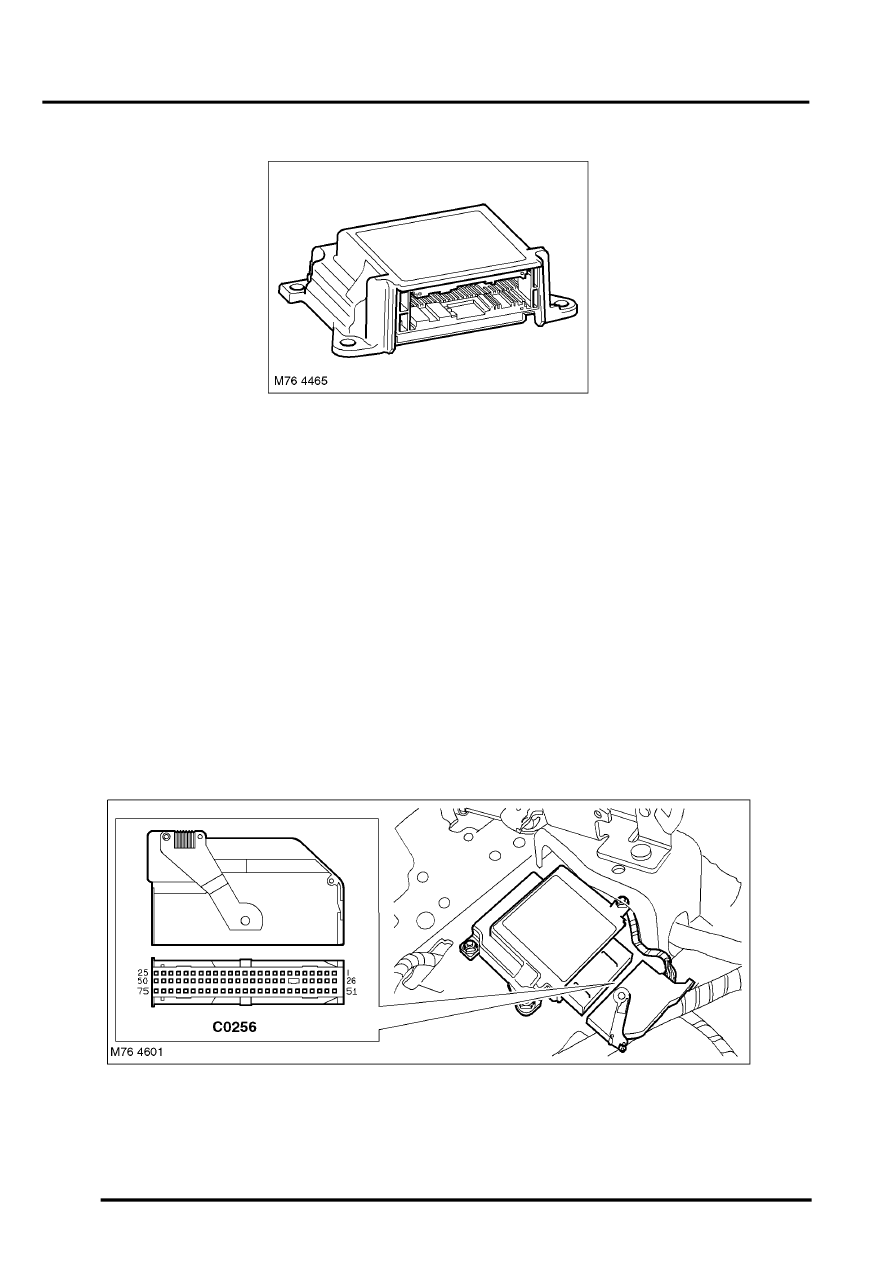L322 Range Rover System Description and Operation

RESTRAINT SYSTEMS
75-6
DESCRIPTION AND OPERATION
DCU
The DCU is installed on the top of the transmission tunnel, alongside the handbrake, and controls the operation of the
SRS. The main functions of the DCU include:
l
Crash detection and recording
l
Airbag and pretensioner firing
l
Self test and system monitoring, with status indication via the warning lamp and non-volatile storage of fault
information.
Accelerometers in the DCU provide crash detection for front and rear impacts. A safing sensor provides confirmation
of a frontal impact. Various firing strategies are employed by the DCU to ensure the airbags/pretensioners that are
fired are appropriate to the severity and direction of the impact. The firing strategy used also depends on the inputs
from the seat belt buckle switches (where fitted) and the occupancy detector sensor, and varies between NAS and
other markets. An energy reserve in the DCU ensures the firing signals can be produced for a minimum of 150
milliseconds after a crash is detected, in case of disruption to the system power supply from the ignition switch.
When the ignition is switched on the DCU performs a self test and then performs cyclical monitoring of the system. If
a fault is detected the DCU stores a related fault code in memory and illuminates the SRS warning lamp. Faults can
be retrieved by TestBook/T4 from the DCU via the K bus connection with the instrument pack. If a fault that could
cause a false fire signal is detected, the DCU actively disables the respective firing circuit, and keeps it disabled during
a crash event.
SRS DCU Harness Connector
